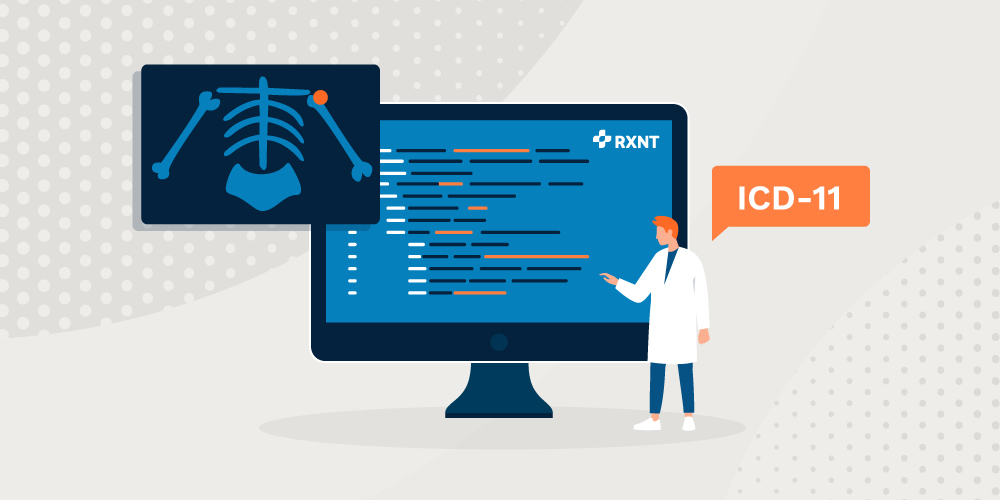The World Health Organization’s (WHO) International Statistical Classification of Diseases and Related Health Problems (ICD) is the international standard for systematic coding, recording, reporting, analysis, interpretation, and comparison of mortality data. The 11th edition went into effect globally on January 1, 2022.
Despite the global mandate, countries like the United States will take several years to fully adopt the revision. Here’s what the medical community needs to know to prepare for and implement the ICD-11 edition.
The History and Development of the ICD-10 Standard
The International Classification of Diseases (ICD) system was created to track morbidity and diseases within the population. In 1898, the Bertillon Classification of Causes of Death was the first attempt at an international registration of vital statistics, which was later adopted by the American Public Health Association and the Conference of State and Provincial Boards of Health of North America. The classification and the later Statistical Classification of Diseases, Injuries, and Causes of Death were the precursors to today’s ICD standard, which continues to be published by the WHO.
Over the years, along with the Current Procedural Terminology (CPT) code set, ICD has become the most widely used statistical classification system in the world, making up the payment infrastructure of the US health system. However, as knowledge of diseases and treatments advances, so must the ICD system.
The previous edition, ICD-10, was developed in 1983 and was endorsed by the WHO’s World Health Assembly (WHA) in 1990. It was first used by member countries in 1994. ICD-10 was mandated by the United States in 2015.
ICD-10 is based on a classification logic that utilizes seven alphanumeric characters with the mathematical potential to generate a significantly higher number of codes than its previous version, ICD-9. According to the CDC, there are over 70,000 ICD-10 procedure codes and over 69,000 ICD-10-CM (Clinical Modification) diagnosis codes compared to only about 3,800 procedure codes and 14,000 diagnosis codes in the previous ICD-9-CM, roughly 50 times as many as ICD-9.
Developed by CMS and NCHS, ICD-10-CM and ICD-10-PCS (Procedure Coding System) are specific to the United States. This capability significantly increased the level of specificity and included new standards and discoveries in medicine.
What Are the Differences Between ICD-10 and ICD-11?
The preliminary version of ICD-11 was released on June 18, 2018, and was presented at the WHA in May 2019. The official classification system took place earlier this year, on January 1, 2022. The new version addresses gaps in ICD-10 and incorporates updates, including new discoveries, methods, and ways of thinking that have become normalized in modern-day healthcare.
The following are key differences between ICD-11 and the previous ICD-10 system:
- Coding Structure: ICD-11 has a more significant categorization and coding structure than ICD-10. The new version includes 55,000 unique codes, a significant increase from ICD-10s’ 14,000. It offers an even finer level of specificity that can be utilized in a broader range of classifications for diseases, disorders, injuries, and causes of death. This includes the ability to dual code traditional medicine diagnoses alongside mainstream medicine and generates a functioning score.
- Mental Conditions: A number of new mental, behavioral, and neurodevelopmental conditions were added to ICD-11. Some of the new disorders include anxiety or fear-related disorders, dissociative disorders, personality disorders, schizophrenia, mood disorders, impulse control disorders, and obsessive-compulsive or related disorders. Each mental disorder listed in ICD-11 includes a description for each condition to increase knowledge and understanding of changing mental health illnesses.
- Global Applicability: ICD-11 has more international usage and offers guidance for various cultures (see dual coding above), and provides nearly 50 different language translations. This will help to create an international classification of codes which will result in higher standardization, collaboration, and interoperability.
- Digital-Readiness: ICD-11 was designed to be electronic and intuitive for a global audience in the digital age, including seamless integration with electronic health applications and the ability to capture more complex data.
- Dimensional Approach: ICD-11 is based on a dimensional approach and allows for categories of severity, course, and specific symptoms to be added to diagnoses. These dimensional expansions make the system better at capturing change over time.
- Built-In Emergency Pandemic Codes: In response to the COVID-19 pandemic, member states requested that emergency codes be built into ICD-11. These codes confirm the diagnosis of COVID-19, classify post-COVID-19 conditions, establish COVID-19 as the cause of death, and record COVID-19 vaccinations and any adverse reactions to vaccinations.
When Can the U.S. Expect ICD-11 Standard Adoption?
ICD-11 has been developed, endorsed, and was effective on January 1, 2022. However, adoption of the system will take some time. The WHO expects countries that have not used a previous version of ICD or utilize a simple information system may take one to two years to fully implement the system. Those with a more sophisticated system where previous ICD versions are already in use may take up to five years to incorporate the new version.
While the official timeline remains to be finalized, it’s expected to be completely adopted as early as 2025 (2027 if a Clinical Modification set is needed).
Despite the slow adoption, the new edition of ICD is overdue as the 10th edition began nearly 40 years ago. The previous decade-long process of ICD-10 adoption indicates that there is a multi-phase approach to the implementation of a new system. However, the technological advances of ICD-11 are likely to provide a more seamless transition and shorter timeline.
Regardless, it’s crucial for healthcare providers to prepare for and implement the 11th revision now. Nearly 30 percent of codes impact all specialties; therefore, it’s important for coding managers and administrative professionals to incorporate the new revisions. Doing so will allow for quicker adoption and shorter timelines for reimbursement.
Prepare for the Eventual ICD-11 Standard with RXNT
Powerful database tools will help equip billing departments and practices for code set changes coming in the future. Our partnership with Intelligent Medical Objects (IMO) surfaces always-updated ICD and CPT billing codes directly into RXNT’s software system, so you can perform a variety of keyword searches using natural language to enable the highest level of detail.
This integrated capability simplifies documentation for encounters in the EHR and optimizes reimbursements for billers in the PM system. Increase accuracy, minimize errors, maximize reimbursements, and speed up the implementation of ICD-11 with automated updates.
RXNT also features integrated software for mental health providers, reducing time spent on manual tasks and lightening administrative workloads. With rapid implementation, our software ensures you’re prepared for ICD-11’s new mental health characteristics in weeks, maximizing efficiency and productivity.





